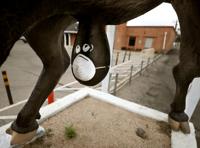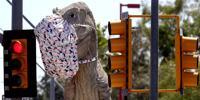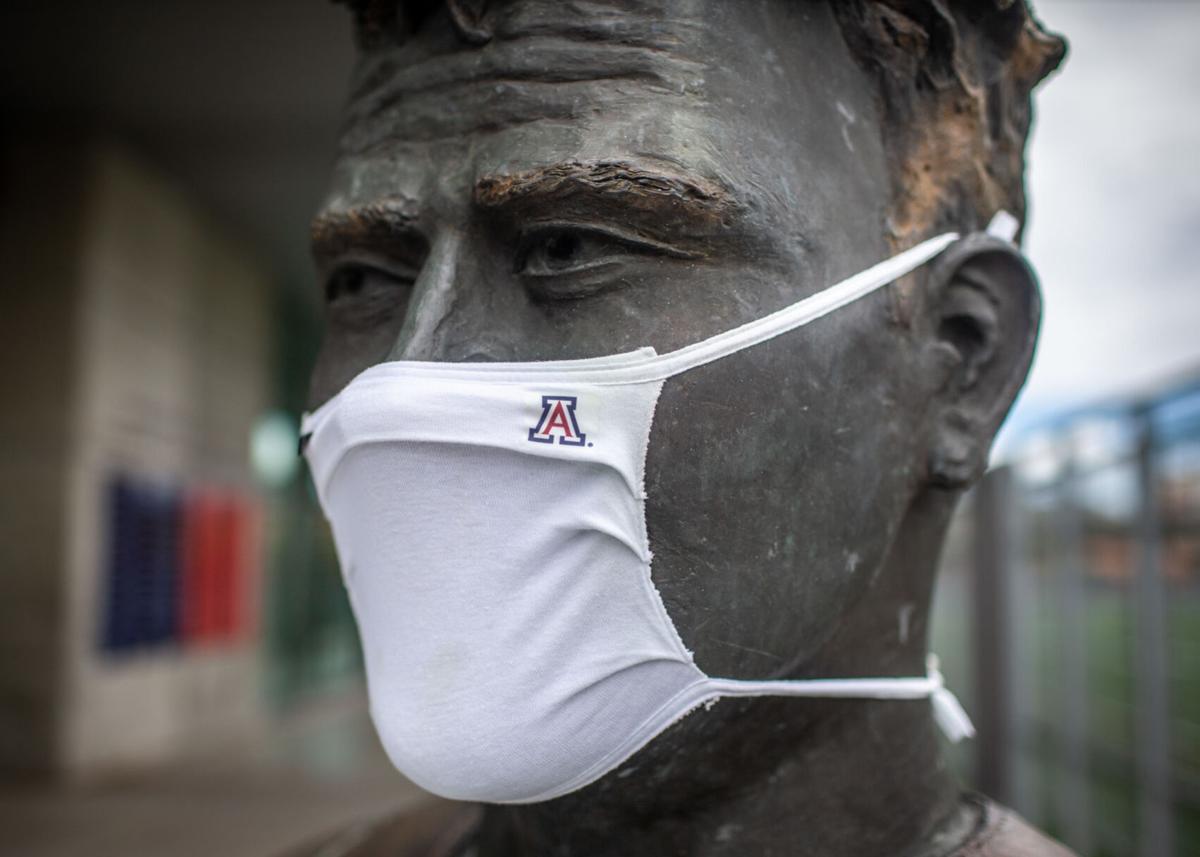Pima and Coconino counties are again at substantial risk for the spread of COVID-19 according to standards set by the Arizona Department of Health Services.
But don’t look for new restrictions on businesses.
The department reported Tuesday that more than 100 of every 100,000 residents of the two counties are testing positive for the virus. That is categorized as substantial.
Two other factors — the percentage of tests coming back positive and the percentage of hospital patients who show up with COVID-like illness — remain in the moderate range.
Under department rules adopted earlier this year, having even one of three factors in the substantial range for two weeks in a row — which is the Pima and Coconino situation now — precluded the opening of certain businesses in a county, including movie theaters and fitness centers. All three factors had to be at least in the moderate range for even limited operations of certain businesses.
But state health officials said Tuesday they will not apply the same rules about all three being moderate in this case. Nor will they order any businesses to be re-closed.
Instead, the decision was made that the only way a county will move “backward” to a point where it used to be — when certain business could not operate at all — is if all three of the benchmarks go back to the substantial range, which has not happened.
That is because the overall situation in Arizona is better than it was in June and July, said health department spokesman Steve Elliott.
That’s when Gov. Doug Ducey initially removed many restrictions on business operations. The result was a sharp increase in infection rates, with new cases topping 5,400 a day statewide.
For the past month, the number of new cases has not topped more than 800 a day.
Gubernatorial press aide Patrick Ptak said Tuesday the change in how the rules and the benchmarks are being interpreted is justified. “We’re in a very different place,” he said.
Ptak said there’s no reason to shutter businesses just because one indicator now shows the risk of substantial spread as long as the others remain in the moderate range.
Part of what’s different, he said, is that the spike in infections appears to be localized. “We know that the universities are driving this,” Ptak said.
“What the data is actually showing is we have a targeted reason for these increases,” he said. “We should have a targeted approach.”
Shuttering some businesses on a county-wide basis does not fit that definition, he said.
“Closing water parks because of cases around universities is not the right approach,” he said.
A voluntary 14-day shelter-in-place order at the University of Arizona ended Tuesday as school officials sought to drive down infection rates among faculty and staff.
Part of the problem, according to UA President Robert Robbins, is that the virus has been spread not in classrooms but at what he said were large, off-campus gatherings.
In explaining the decision to leave business operations intact in the two counties despite the increase in infection rates, Elliott pointed to what he said are “strict mitigation strategies” designed to help prevent another spike like the one that occurred in June and July.
One of those strategies is that there is now a requirement that restaurant patrons must wear masks when they are not “actively eating or drinking.”
Elliott said other things are different now, too. For example, gyms and fitness centers, which were allowed to open their doors, have to operate at just 25% capacity.
There also are occupancy restrictions at other businesses.
And the state has established a “hotline” where people can report violations of the requirements.
Elliott also cited what he said is broad access to testing, with fast turnaround results, and enhanced contact tracing by the state and counties.
Photos: In Tucson, face masks are for more than just people
Face masks on objects
Updated
A Jeep sports with eyes like those from the movie "Cars" sports a COVID19 mask outside Alpha Graphics near the corner of Tanque Verde and Kolb, Tucson, Ariz., July 3, 2020.
Face masks on objects
Updated
The large Tiki head at the entrance of The Hut, 305 N. 4th Ave., wears a mask in response to the Coronavirus Disease (COVID-19) in Tucson, Ariz., on April 5, 2020.
Face masks on objects
Updated
The noted bull testicles on the statue outside Casa Molina at Speedway and Wilmot, usually painted in various schemes and wild colors, are in these CONVID19 times now sporting a face mask, March 27, 2020, Tucson, Ariz.
Face masks on objects
Updated
A dinosaur statue over the doors of MATS Dojo at 5929 E. 22nd St., sports an athletic cup for a face mask in the second week of COVID-19 restrictions, March 31, 2020, Tucson, Ariz.
Face masks on objects
Updated
The venerable T-Rex outside the McDonald's at Grant and Tanque Verde comes around late, but strong, to the mask game, May 13, 2020, Tucson, Ariz.
Face masks on objects
Updated
The iconic Casa Molina bull and matador statue both sported masks on the first full week of the loosening of COVID-19 restrictions in mid-May.
Face masks on objects
Updated
Father Kino's horse practice safe social interaction by wearing a mask even if Father Kino himself isn't. The statue sits at Cherry Fields at 15th Street and Kino Boulevard, Saturday, May 2, 2020, Tucson, Ariz.





